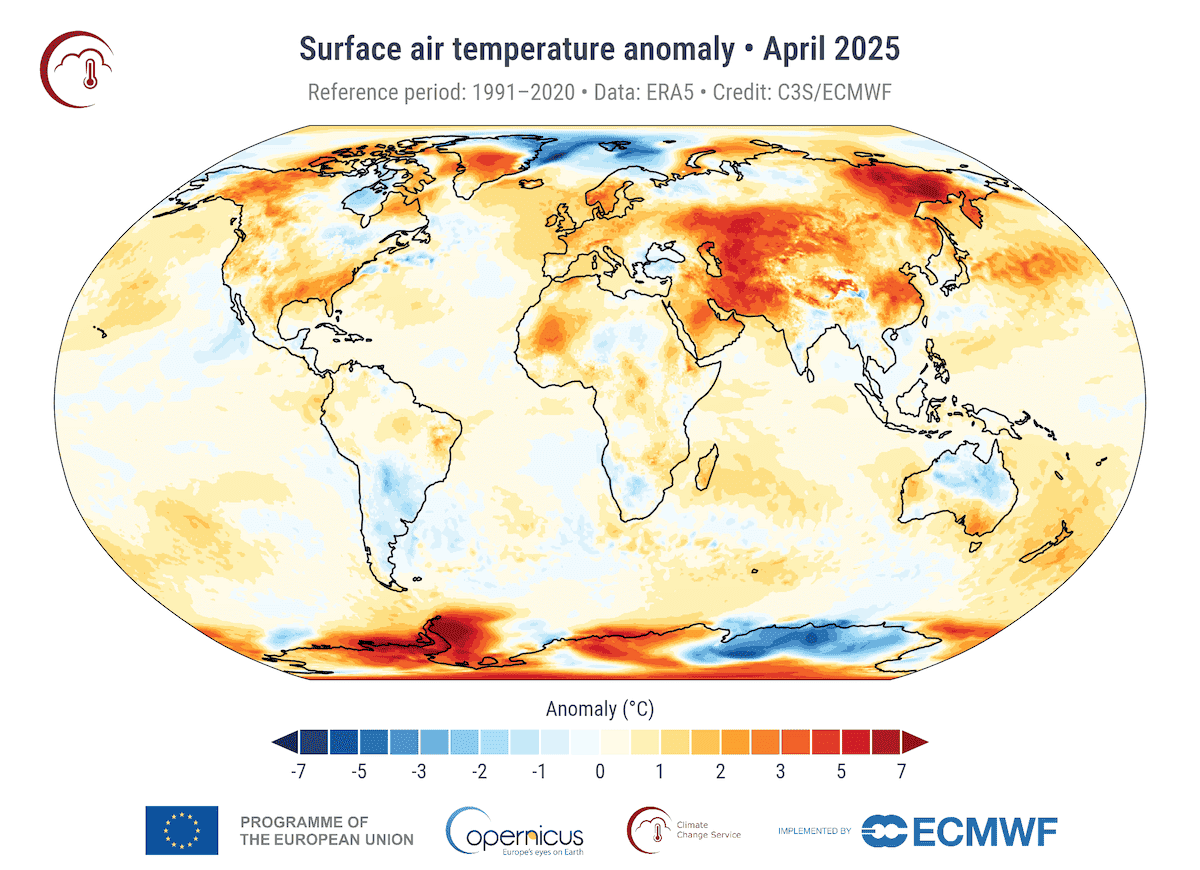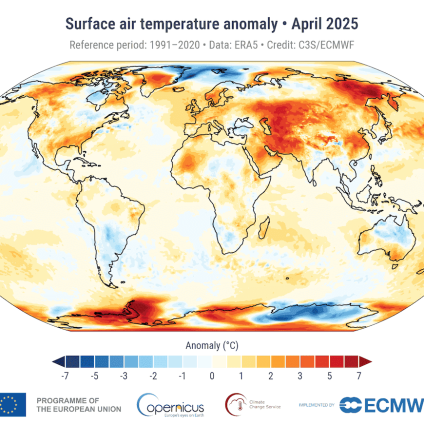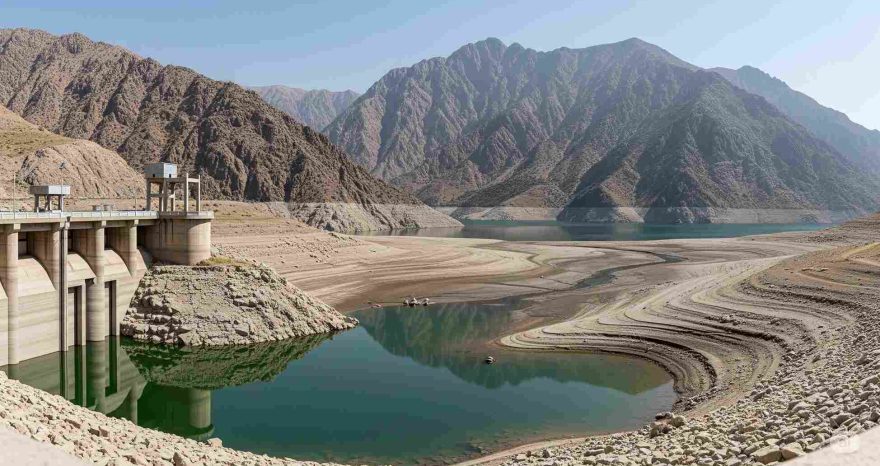Global temperature is still more than 1.5°C above the pre-industrial era

The Copernicus Climate Change Service (C3S), operated by the European Centre for Medium-Range Weather Forecasts on behalf of the European Commission and funded by the EU, publishes monthly climate bulletins analyzing changes in global surface air and sea temperatures, sea ice coverage, and hydrological variables. Most of the findings are based on the ERA5 reanalysis dataset, which incorporates billions of measurements from satellites, ships, aircraft, and weather stations worldwide.
Global surface air and sea temperatures in April 2025
Global temperatures:
April 2025 was the second warmest April ever recorded globally. According to ERA5 data, the average global surface air temperature reached 14.96°C, which is 0.60°C above the 1991–2020 April average.
It was 0.07°C cooler than the record-breaking April 2024 but 0.07°C warmer than April 2016, now ranked third.
April 2025 was 1.51°C above the estimated 1850–1900 pre-industrial baseline, marking the 21st month out of the past 22 in which the global average surface air temperature was more than 1.5°C above the pre-industrial level.
The 12-month period from May 2024 to April 2025 was 0.70°C warmer than the 1991–2020 average and 1.58°C above pre-industrial levels.
Note: Other datasets may not confirm the 21 months above 1.5°C highlighted here, due to ERA5’s relatively narrow margins above 1.5°C in several months and variations between different datasets.
Samantha Burgess, Deputy Director at ECMWF, stated:
“Globally, April 2025 was the second warmest on record, continuing the long sequence of months above 1.5ºC relative to the pre-industrial era. Ongoing climate monitoring remains essential to understanding and responding to the rapid changes in our climate system.”
Europe and beyond:
In Europe, the average surface air temperature in April 2025 was 9.38°C, which is 1.01°C above the 1991–2020 average, making it the sixth warmest April on record for the continent.
Temperatures were predominantly above average across most of Europe, with notable warm anomalies in eastern Europe, western Russia, Kazakhstan, and Norway. Cooler-than-average conditions occurred in Turkey, eastern Bulgaria and Romania, Crimea, and northern Fennoscandia.
Outside Europe, above-average temperatures were recorded across the Russian Far East, much of central and western Asia, most of North America, parts of Australia, and the Antarctic Peninsula and West Antarctica.
In contrast, below-average temperatures were observed in southern South America, eastern Canada (including the Great Lakes and Hudson Bay regions), northeastern Greenland and Svalbard, northern Australia, and East Antarctica.
Sea surface temperatures:
The global average sea surface temperature (SST) between 60°S and 60°N in April 2025 reached 20.89°C, the second-highest ever recorded for April, just 0.15°C below the 2024 record.
SSTs remained exceptionally high across many ocean basins. Large parts of the northeastern North Atlantic continued to register record-breaking April temperatures. The Mediterranean Sea was significantly warmer than average, though not as extreme as in March.
Sea ice extent in April 2025
Arctic sea ice extent was 3% below the long-term average, ranking as the sixth lowest April extent in 47 years of satellite records. This follows four consecutive months with record-low values for the time of year.
The most notable reductions were seen in the Barents and Okhotsk Seas, while above-average concentrations were observed in the Greenland Sea.
Antarctic sea ice extent was 10% below the average, the tenth lowest ever recorded for April.
Sea ice concentrations around Antarctica showed mixed anomalies, with no single prevailing trend.
April 2025 hydrological patterns
In April 2025, much of central Europe, the UK, southern Fennoscandia, and parts of eastern Europe experienced drier-than-average conditions.
Conversely, southern Europe, northern Norway, southern Finland, and parts of western Russia saw wetter-than-average weather. The Alpine region was hit by heavy rainfall that led to flooding, landslides, and avalanches.
Globally, drier-than-average conditions prevailed in western North America, central and eastern Asia, much of southern Australia, Madagascar, and parts of South America.
Wetter-than-average conditions were observed in parts of Canada and Alaska, the U.S. Midwest, eastern and central Russia, southern Africa, northern Australia, and central South America. In many of these areas, excessive rainfall triggered floods and associated damage.












